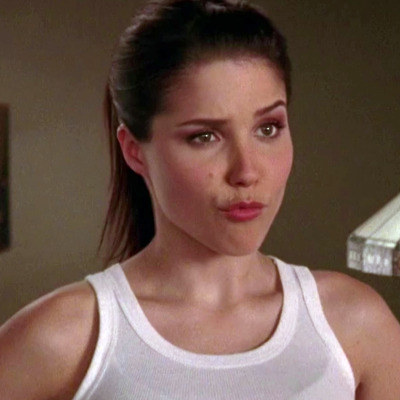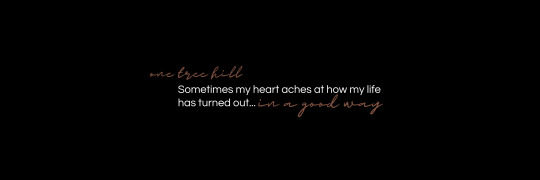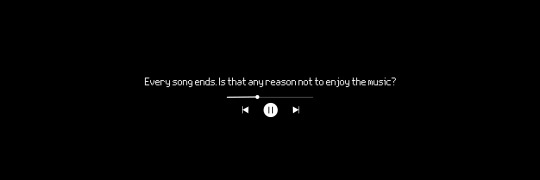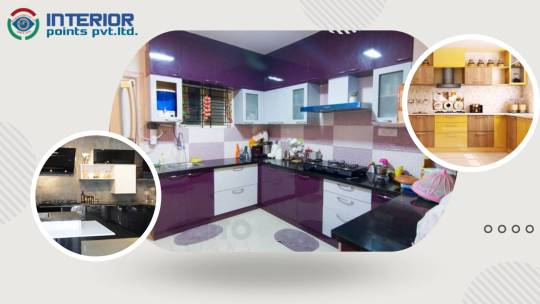#oth layouts
Explore tagged Tumblr posts
Text









#icons#girls icons#twitter icons#female icons#oth#one tree hill#brooke davis#sophia bush icons#icons sophia bush#brooke davis icons#icons brooke davis#oth icons#icons onee tree hill#one tree hill icons#sophia bush#oth layouts#tv shows icons#2000s icons#oth headers#brooke davis icon#sophia bush icon#one tree hill layouts#2000s moodboard
106 notes
·
View notes
Text





• like or reblog if you save/use
@httppetrova
#one tree hill headers#one tree hill#one tree hill icons#oth headers#oth icons#brooke davis icons#brooke davis headers#brooke davis#peyton sawyer#peyton sawyer icons#sophia bush#sophia bush icons#chad michael murray#nathan scott#haley james scott#lucas scott#twitter headers#pack twitter#twitter layouts
105 notes
·
View notes
Text
Instagram is imploding over speculation that Hilarie is beefing with Joy over Joy’s memoir cover reveal today
How are y’all doing
#apparently Joy��s cover has a similar layout to Hilarie’s first book#but as others have mentioned let’s remember that authors don’t usually get to pick their covers#one tree hill#oth#**hilarie’s SECOND book cover not first sorry
7 notes
·
View notes
Note
hi derin! i’ve been following you for a little while, and also bemoaning the nature of publishing fiction (indie or trad) for a little bit longer than that, and i only just realized today that…of course web serials are a thing i can also do!
i really love the idea of publishing serially (though i’m not totally sure i CAN, i’d like to try), so while i add this to my list of potential paths, do you have any advice for getting started? building an audience? marketing? figuring out if writing/publishing this way will work for you to begin with?
i know that’s a lot of questions, and you don’t have to answer all of them! i’m throwing spaghetti at a wall out here. i hope you have a good day though, and thanks in advance!
Getting started in web serial writing
Web serial writing has the lowest barrier of entry of any major method of publishing your story. You can literally just start. There are two steps:
start writing your story
decide how/where you want to publish it
The writing part, I assume you have handled. The important thing to note here is that you gotta see the project through. Start and don't stop until you're done. For publishing, you have a few options:
1. Publish on a website designed for web serial novels
There are a few of these around, they're usually free to publish on (although most offer a paid account to give you ad space or boost you int he algorithm or whatever), and your best choice generally depends on which one happens to gravitate to a niche that best suits your kind of work. The big names in this industry are Royal Road and Scribblehub, which, last I checked up on them (about a year ago) tended towards isekai and light erotica respectively. (You absolutely can publish outside these niches on these sites, it's just much harder to get traction.) Publishing somewhere like this comes with multiple advantages. Firstly, there's a writing community right there to talk to; there's usually a forum or something where people gather to talk about reading or writing on the site. Second, the site itself is designed specifically to publish web serials, and will come with a good layout and hit trackers and 'where you left off' buttons for the reader and all that; generally all you have to do is copy-paste the text of a chapter into the page and the site will do everything else for you. Third, there's an audience sitting right there, browsing the 'latest arrivals' or 'most popular' page of the site; if you can get high in the algorithm, you have to do little if any marketing.
The downsides of such places usually come down to the same things as the advantages. Such sites are a flooded market. Your story absolutely will drown in a sea of other stories, a great many of them terrible, and most of them with the advantage of catering to the site's niche. Gaining an audience there is often a matter of trying to game an algorithm, and the community can be... variable. Some of these places are nice but most of them are a bunch of authors trying to tear down everyone around them to make their own work look better by comparison int he hopes of poaching audiences for their story instead. If you go this route, I'd recommend shopping around for a site that fits you personality and writing style (or just posting on many sites at once; you can also do that).
These places also tend to get targeted by scrapers who will steal your story and sell it as an ebook, which is very annoying.
2. publish on another site
Plenty of people publish web serials here on Tumblr. I do not know why. This site is TERRIBLY set up for that. It makes tracking stories and updates a pain in the arse (people end up having to *manually tag every reader whenever they post an update*), building and maintaining archives are annoying, community building is surprisingly difficult for a social media site, and it's just generally far more work for both writer and reader than it needs to be. You often do have a ready-made audience, though.
This does tend to work better on other sites. Reddit has multiple communities for reading and writing various types of fiction; publishing on these is a bit more work than somewhere like Royal Road, but not very much, and many of these communities are very active. There aren't as many forums around as there used to be, but you might be able to find fiction hosting forums, if that's what you prefer. And of course, many writers who simply want to write and don't mind not being paid choose to write on AO3.
These sites are a good middle ground compromise for people who want a ready-made community and don't mind putting in a bit of extra work.
3. make your own site
This is what I did. You can make a website for free, giving people a hub to find you and all your work, designed however you like. You can also pay for a website if you want it to be a little bit nicer. This option is the most work, but gives you the most control and leaves you free of having to worry about any algorithm.
The obvious downside of this is that there's no community there. If you host your work on your own website, you need to bring people to it. You need to build an audience on your own. This is not an easy thing to do.
Building an audience (general advice)
Here is some general advice about building an audience:
1. Consistency. Consistency. Consistency.
If you want people to read your writing, the best piece of advice I can possibly give you is have an update schedule and update on time, always. If you need to take a break, give people as much warning as possible and tell them exactly when you will be back, and come back then. Do not take unnecessary breaks because you don't feel like writing. (Do take breaks if you get carpal tunnel or need time off for a major life event or something -- your health is more important than the story.) If you're taking a lot of breaks to avoid burnout, you're doing it wrong -- you need to rework your whole schedule from the start and slow down updates to make these breaks unnecessary. Two chapters a month with no breaks is a billion times better than four chapters a month with frequent burnout breaks.
Consistency. Consistency. Consistency.
A reliable schedule is the #1 factor in audience retention. If readers need to randomly check in or wait for notifications from you to check if there's an update, guess what? Most of them won't! They'll read something else. You want your audience to be able to anticipate each release and fit it in their own schedule. I cannot overstate the importance of this.
2. If you can, try to make your story good.
We writers would love to live in a world where this is the most important thing, but it actually isn't. Plenty of people out there are perfectly happy to read hot garbage. How do I define 'hot garbage'? It doesn't matter. Think of what you would consider to be just a terrible, no-effort, pointless garbage story that the world would be better off without. Someone is out there writing that right now, making US$2,500/month on Patreon.
It is, however, a real advantage if you can make your story good. At the very least, it should be worth your audience's time. Preferably, it should also be worth their money, and make them enthusiastic enough to try to get their friends into it. Managing this is massively advantageous.
3. Accept that you're not going to get a big audience for a really long time. Write consistently and update on schedule every time anyway.
It took me over a year to get my second patron. For the first year, I updated Curse Words every single week, on schedule, for over a year, and had maybe... four readers. One of them was a regular commenter. One of them was my first patron. There was no one else.
My audience has grown pretty rapidly, for this industry.
You're not gonna start publishing chapters for a big, vibrant community. You're just not. And you have to keep going anyway. These days, I have a pretty good readership, and those couple of loyal readers (who I appreciate beyond words) have grown into a much larger community, who hang out and debate theories with each other and liveblog and drag in new readers and make fanart. My discord has over 550 members, with volunteer moderators and regular fan artists and its own little in-jokes and games and readers who make a point of welcoming newcomers and helping them navigate the discord, all with very little input from me. I start crying when I think about these people, who do the bulk of my social and marketing work for me just because they want to help, and my patrons who, after writing for over 4.5 years, have recently helped me pass an important threshold -- my web serial (via patreon) now pays my mortgage repayments. I can't live off my writing alone, but boy is that a massive fucking step.
You're not gonna have that when you start. You're gonna have a couple of friends. And that's it. Maybe for a year. Maybe less, if you're good at marketing and lucky. Maybe longer.
You have to update on schedule, every time, anyway.
Building an audience (more specific advice)
"Yeah, that's great, Derin, but where can I find my fucking audience?" Well, if you publish on a web serial site, then the audience is there and you jsut need to grab their affention using the tools and social norms offered to you by the site. I utterly failed at this and cannot help you there. You can still use these other tips to bring in readers from off-site.
1. Paid ads
I've never paid for ads so I can't offer advice on how to do it. I've Blazed a couple of posts on Tumblr; they weren't helpful. This is, however, an option for you.
2. Actually tell people that your story exists and where they can find it.
I used to have a lot of trouble with this. I didn't want to bother people on Tumblr and soforth by telling them about my personal project. Unfortunately you kind of have to just get over that. Now I figure that if people don't want TTOU spam, they can just unfollow me. If you're like me and want to just politely keep your story to yourself... don't. You're shooting yourself in the foot doing that.
You need to mention your story. Link your story in your bio on whatever social media sites you use. Put it in your banner on forums. Make posts and memes about it. Eventually, if you're lucky, extremely valuable readers will start to talk about your story and meme and fanart it for you, but first, you need to let them know it exists.
It will always feel weird to do this. Just accept that people can unfollow you if they want, and do it anyway.
3. Leverage existing audiences and communities
Before I started doing this web serial thing, I used to write a lot of fanfic. The original audience that trickled in for Curse Words comes from AO3, where I was doing a full series rationalist rewrite of Animorphs. They knew how I wrote and wanted more of it. Nowadays, I still occasionally pull in readers through this route. Most of my new readers these days come from a different community -- people who follow me on Tumblr. Occasionally I bring in people who don't follow me because we'll be talking about how one of my stories relates to something different, and fans of that thing might decide they want to check my stories out.
Your first readers will come from communities that you're already in and that are already interested in something similar to what you're doing (people reading my fanfic on AO3 were already there for my writing, for instance). Keep these people in mind when you start out.
One additional critical source of existing communities is your readers themselves. A huge number of my readers are people I've never been in any group with -- they were pulled in by their friends, relatives, or community members who were reading my stories and wanted them to read them too. This is an absolutely invaluable source of 'advertising' and it is critically important to look after these people. enthusiastic readers, word-of-mouth advertisers, and fan artists are the people who will bring in those outside your immediate bubble.
4. Your "where to find me" hub
If you're publishing on your own website, you can simply link everything else to your homepage, and put all relevant links there. For example, I can link people to derinstories.com , which links out to all my stories, social media I want people to find me on (you don't have to link all your social media), patreon, discord, et cetera. If you don't have your own website, you're going to have to create a hub like this in the bios of every site where you garner audiences from. This is the main advantage of publishing on your own website.
Monetisation
There are a few different kinds of monetisation for web serials, but most of them boil down to 'use a web serial format to market your ebook', which to be honest I find pretty shady. These authors will start a web serial, put in enough to hook an audience for free, and then stop posting and release an ebook, with the intention of making readers pay for the ending. Now, to be clear, I am absolutely not against publishing and selling your web serial -- I'm doing exactly that, with Curse Words. I am against intentionally and knowingly setting up the start of a web serial as a 'demo' without telling your audience that that is what you are doing, soliciting Patreon money for it, and then later yanking it away unfinished and demanding money for the ending.
Monetisation of these sorts of stories is really just monetisation for normal indie publishing with the web serial acting as an ad, and I have no advice for how to do that successfully.
Your options of monetisation for a web serial as a web serial are a bit more limited. They essentially come down to merchandise (including ebooks or print books) or ongoing support (patreon, ko-fi, etc.) Of these, the only one I have experience with is the patreon model.
This model of monetisation involves setting up an account with a regular-donation site such as patreon, providing the base story for free, and providing bonuses to patrons. You can offer all kinds of bonuses for patrons. Many patrons don't actually care what the bonus is, they're donating to support you so that you can keep writing the story, but they still like to receive something. But some patrons do donate specifically for the bonuses, so it's worth choosing them with care.
The most common and most effective bonus for web serials is advance chapters -- if people are giving you money, give them the chapters early. You can also offer various bonus materials, merchandise, or voting rights on decisions you need to make in the future. 'Get your character put in the story' is a popular high-tier reward. If you're looking for reward ideas, you can see the ones I use on my patreon.
Patreon used to offer the ability to set donation goals, where you could offer something when you were making a certain amount total or had a certain number of subscribers. They recently removed this feature because Patreon hates me personally and doesn't want me to be happy, so you kind of have to advertise it yourself now if you want to use these goals. I release chapters of unrelated stories at donation goals, and I found this to be far more effective than I thought it would be.
The important factor for this kind of monetisation is that it's ongoing. The main advantage of this is that it makes your income far more regular and predictable than normal indie publishing -- your pledges will go up or down over a month, but not by nearly as much as book sales can. The main thing to keep in mind is that it's not a one-time sale, which means that however you organise things, you want to make sure that donating keeps on being worth it, month after month. Offering bonuses that aren't just one-time bonuses, but things that the patron can experience every month, helps here. So does making sure that you have a good community where patrons can hang out with other patrons. (Offering advance chapters does both of these things -- the patron can stay ahead in the story and discuss stuff with other patrons that non-patrons haven't seen. I've found that a lot of my patrons enjoy reading an emotionally devastating chapter ahead of time, discussing it, and then all gathering a week or two later to watch the unsuspecting non-patrons experience it for the first time.)
Whatever method you use for monetisation, rule #1 is (in the words of Moist Von Lipwig): always make it easy for people to give you money. The process of finding out how to give you money should be easy, as should the process of actually doing it. And, most importantly, the spender should feel like it's worth it to give you money. This is a big part of making it easy to give you money. Make your story worth it, make your bonuses worth it, make sure that they're happy to be part of your community and that they enjoy reading and supporting you. And remember that support comes in many forms -- the fan artist, the word-of-mouth enthuser, the person who makes your social hub a great place to be, the patron, all of these people are vital components in the life support system that keeps your story going. And you're going to have to find them, give them a story, and build them a community, word by word and brick by brick.
It's a long process.
Good luck.
.
277 notes
·
View notes
Note
hi there, saw your popular character spiderman post, was amused, checked your profile, saw your distaste for spiderverse and insistance on reading a comic book, opened the inbox. I'd love to know where and how I should start with... well.. reading, I suppose? my favourite spider-people variants (?) are Gwen Stacy (Ghost Spider) and Spider Noir, so, I just wanted to ask if you have any recommendations or pointers as someone who's been wanting to indulge in spiderman comics forever but never really knew what to do. if this ask is left unattended, that's understandable and I hope you have a lovely day. (you have a nice layout btw :)c
hey there! glad you liked the post lol. so I would like to preface by saying that I haven't read any of Noir's solo runs in full before so I am Not the person to be asking if you're looking for a comprehensive reading list on him — I also don't think I'd be great in terms of giving you a good entry point to Peter Parker's Spider-Man if you're looking for that (though I can give you a handful of books & issues for Peter that I really like — I personally have a preference for Dematties Spectacular Spider-Man.)
Gwen I can definitely help you with though!!!
I think as a character she has gone through alot of flattening over the years, and if you read her runs in order you can absolutely see this happen in real time [esp after the release of itsv. lmao.]; I personally would not recommend reading Stephanie Phillips' Ghost-Spider run nor would I recommend reading any of her more recent appearances in other comics, she goes through honestly a very disappointing amount of character assassination and hardly even acts like the same character anymore. sad!
in terms of looking for an entry point with Gwen-65, I'd suggest starting with Jason Latour's first Spider-Gwen annual, this was also her very first solo appearance and a good introduction to her character I think. smiles
immediately after this follows Spider-Gwen vol I, also written by Jason Latour — this story is continued in Spider-Gwen vol II, and is [I think] her best and most well written run to date, it is also her longest I believe(?).
following Gwen's release from prison is Seanan McGuire's Spider-Gwen: The Ghost-Spider (2018) & (2019). I have very mixed feelings on this run, I think that she retcons alot of things from the Latour runs and also fails to address alot of things from the Latour runs, it's also very tonally different and this saddens me. it does hold up though and for what it's worth I do think that if you're looking for a casual entry into her comic books, the McGuire run is the most palatable; this run also does alot to etablish who she is as a person and how she's recovered from the events of the Spider-Gwen vol I & II — I also think that McGuire does an incredible job with writing how Gwen's powers work while not overcomplicating them, Ghost-Spider has a unique set of abilities and it's clear that McGuire has put alot of thought into how they function. (I think the way that she writes and explains them in King in Black is also really really good. the wonderful scary black ichor)
in addition, one of my favorite runs for Ghost-Spider is King in Black: Gwenom vs. Carnage — this one was also written by Seanan McGuire and if i'm honest I think she does a better job with Gwen's characterization in this book compared to Ghost-Spider 2018-2019 lol. this was apart of a larger event that featured multiple other comics that are mostly irrelevant to Gwenom vs. Carnage, you really don't need to read the other King in Black comics to jump into this one and it should be noted that Gwen & Em Jay never appear in any of the other comics from this event, nor are they really relevant to it outside of the contained story from their comic.
I hope this helped you! Gwen honestly does not have very many comics, she only has three full mainline runs at the moment and then a slew of different annuals and limited stories [along with her appearances in other character's comics]. she's not a difficult character to read for if I'm honest, and going through every single one of her comics is not necessary if you're simply looking to understand who she is and what she's gone through. thumbs up
14 notes
·
View notes
Text
[ Genshin Impact Modern Highschool AU ]:
Yandere Mika
Content warning(s): Yandere behaviour, stalking, nosebleeds (Please let me know if I've missed anything!)



Yandere Mika, who is your cute and shy classmate in highschool. At first glance, he's the kind to work super hard in his studies, do all the homework, all for achieving his dream of becoming a cartographer.
Yandere Mika, who in reality, actually mostly daydreams and obsesses about his crush (you, of course) during class. He might look like he's listening to the teacher intently, but really, his thoughts are only filled with you ♡ !
Yandere Mika, who only goes back home to catch up on his studies and finish assignments because all of his time in school is spent with you in his head. Despite everything, he still manages to get top 5 in class! (Obviously, because he's also working hard to impress you ♡ !!)
Yandere Mika, who purposely sits further behind you in class so it's easier for him to stare at you, while you don't notice. Sometimes you turn your head back a little, and he quickly scrambles back to making little notes and doodles of you in the corner of his book, all while a huge blush is on his face.
Yandere Mika, who is generally awkward and shy when talking to regular people, but literally crashes into a Windows blue screen error when having the chance to converse with you. Stuttering isn't a thing anymore, it's either straight up gibberish or his mind instantly goes blank. God forbid you managed to get paired with him in a group project! He will die a happy death right then and there.
Bonus points if you smile or say something nice to him, or even give a complement. He would actually faint on the spot. His friends even considered carrying a defibrillator next time just in case. There have been way too many trips to the infirmary.
Yandere Mika, who eventually, through hard work, physical effort not to faint, and practices in front of the mirror, is finally able to hold a somewhat normal conversation with you, much to his delight. (Though it's barely cohesive, given how much he's still stuttering)
Yandere Mika, who often daydreams about you two in all sorts of scenarios. Sometimes (a lot of times), these daydreams get a little out of hand, and he gets so flustered he nosebleeds. It's such a common occurrence, just because he was...thinking...maybe about your wedding day...?!
Yandere Mika, who constantly has a tissue stuffed in his nostril, almost completely drenched in blood. He carries a whole box of tissues in his bag for his nosebleeds. At this point, he's a tissue paper expert, who knows the brands that absorb blood the best.
Please don't give him attention or concerns if you see blood dripping down his chin. Even a simple “Are you okay?” with that adorable voice of yours is enough to make his brain go haywire and worsen his nosebleed.
Yandere Mika, who has a part of his mind that's completely lucid and keeps telling him that the stuff he thinks and daydreams about you is creepy and wrong, and he desperately tried to think about other things like exams or club activities.
As you can tell, it's not very effective, because he is 100% head over heels for you, and you live inside his head rent free, no mortgage.
Yandere Mika, who obviously stalks you all the damn time. He has drawn tons of maps, all marked with the routes you take back home, to that cafe you frequent, to the park, literally anywhere, in red pen, all pinned on the corkboard in his room.
Yandere Mika, who even mapped out the whole layout of your house, giving extra detail to your room (don't ask how he got in there). In fact, he's memorized every little thing in your room to a T, from the fluff of your pillow to the clothes in your closet.
By the way, don't mind the tiny blood stain on your carpet. It's totally not because Mika was nosebleeding while letting his thoughts run wild by accident.
Yandere Mika, who has piles and piles of notebooks filled with documented conversations you've had with others, all to figure out your hobbies, likes, dislikes etc. without actually having to talk to you (in case he faints again). What a caring future boyfriend, understanding you so well ♡ !!
Yandere Mika, whose notebooks also contain biographies of info about you, rewritten over and over again. That's what he's actually writing, while you think he's simply writing study notes. If finals required him to write a 5000 word essay about you, he's absolutely acing it.
All of those notebooks are kept in a dedicated bookshelf in his room. He prays to the Archons that you don't ever visit his house, so you don't get creeped out by it and never talk to him again. His heart would break into a million pieces :(
Yandere Mika, who loves you very, very, very much!

#genshin impact#yandere genshin impact x reader#genshin impact x reader#yandere genshin#mika#yandere mika#mika x reader#yandere mika x reader#mika genshin impact
51 notes
·
View notes
Text
A Crash Course to Design Thinking: Empathy
●~•──────── Introduction ─────────•~●
Hello! Today I wanted to talk about UX design. This post was supposed to be longer but Tumblr deleted my draft and I’m feeling (╯°□°)╯︵ ┻━┻ so here is just part one.. We’ll be covering the “Empathy” step which includes:
Exploring the problem space
Conducting User Research
Defining User Personas
I believe that taking time to do design thinking when creating a product avoids bad door knobs and confusing app interfaces. Here’s a handful of hilariously bad UI demos for taste: https://mattw.io/bad-ui/.
Here’s some other common pitfalls:
Too many choices for a user (overcrowded toolbars)
Not enough options for users (accessibility)
Poor feedback (“Did that form actually go through?”)
Inconsistent interfaces (“Do I push or pull on this door…It says push, but has a pull handle!”)
●~•────────What is a prototype? ─────────•~●
A prototype is an early model mock-up of the product you want to build. We’re focusing on digital products in this case, so the product can be an app, website, or any other applications. Prototypes are useful for conceptualizing and visualizing your ideas for the product. It's also meant to showcase the "flow" of using the app from a user's perspective, as well as show the layout and organization of your product.
●~•───────What is the design thinking process? ────────•~●

The design thinking process is an iterative process to approaching designing products. It's not necessarily linear, but we'll walk through what you should consider at each step. In practice, you may find yourself revisiting steps to refine your problem, ideas, and mock-up itself after getting user feedback. Let’s talk about the first step, empathizing!
Part 1: Empathize
●~•─────── Step 1 ────────•~●
⭐ Pick a problem space.
What problem are you trying to find a potential solution for? It could be as simple as "Tumblr’s draft system sucks" or maybe your friend just said "This book tracking app could be better.." Sources of inspiration are everywhere!
Coming up with your own: Think about your own experiences as a user of different products or services. Have you encountered any frustrating issues or pain points that could be addressed with a potential solution? Maybe you struggle with finding parking in your city and wish there was a more efficient way to find available spots. Or perhaps you find it difficult to keep track of all your passwords and would like a more secure and user-friendly password manager. Consider your own needs and experiences as a starting point for identifying potential problem spaces.
Interacting with others: Talk to people in different industries or fields, or attend events or conferences related to areas you're interested in. This can give you exposure to different perspectives and potential problem spaces that you may not have considered before. For example, if you're interested in education technology, attending an education conference could help you identify common challenges and needs in that space. Or even reading through r/professors or talking to your own instructors!
📚 Resources:
https://www.uxchallenge.co/ - List of problems
https://uxtools.co/challenges/ - Walkthroughs on tackling specific problems focused on UX skills
●~•─────── Step 2 ────────•~●
⭐ Understand the users affected by the problem.
Once you have a problem space, don’t jump ahead and start thinking of solutions! First, we must understand the problem from a variety of user perspectives. Why? Because by understanding the users affected by the problem, we can gain insights into their needs, pain points, and behaviors. This understanding can help us develop effective solutions that address their needs and improve their experiences.
There’s a variety of user research methods we can use to collect user perspectives, this is just a handful of them:
Survey: If the product already exists (and it’s yours), you could add a survey in-app for feedback on a specific feature. Otherwise, you can create a survey assessing a user’s impressions on a problem they might have (“Do you encounter this..?”, “Would you be interested in a product that..”, “What kind of features are most important to you?”).
User Interviews: This involves talking to users one-on-one to gain insights into their experiences, needs, and pain points. It's important to ask open-ended questions and actively listen to their responses to understand their perspectives fully.
Online Research: Checkout user impressions on products by looking up existing reviews online. This can be from Amazon, Reddit, the app store, whatever. To make this kind of data useful, you can identify patterns of what is often mentioned or common pain points users express online. It’s going to be better if you can connect more directly with users about your specific problem area, but this is something to start with.
📚 Resources: (I love nngroup…)
https://www.nngroup.com/articles/ux-research-cheat-sheet/
https://www.nngroup.com/articles/guide-ux-research-methods/
https://www.nngroup.com/articles/which-ux-research-methods/
●~•─────── Step 3 ────────•~●
⭐ Create User Personas to represent the types of users your product will be addressing the needs of.
The user persona shouldn’t represent a specific (real) person, rather it should represent a realistic archetype of a person. I think of it as like a character sheet. For example, if we’re creating an app for book tracking our user personas might be “Reader Rhea - A college student looking to organize books from her classes” or “Bookworm Bryan - A young adult looking to get book recommendations”. The persona should be based on the research you did prior. Creating user personas will help you better understand and empathize with your users, and make design decisions that align with their needs and goals.
Here’s a quick checklist of what to include in a user persona:
Name: Give your persona a name that reflects their characteristics and needs.
Demographics: Include details like age, gender, occupation, and location.
Goals: What are the persona's primary goals and objectives when using your product?
Pain points: What are the main challenges or problems that the persona faces when using your product?
Behaviors: What are the typical behaviors and habits of the persona when using your product?
Motivations: What motivates the persona to use your product?
Personality: What are the persona's personality traits and characteristics?
Scenario: Describe a scenario in which the persona would use your product or service.
Quote: Include a quote that summarizes the persona's attitude or perspective.
📚 Resources:
https://about.gitlab.com/handbook/product/ux/persona-creation/
https://www.nngroup.com/articles/personas-study-guide/
https://www.justinmind.com/blog/user-persona-templates/ - lots of examples and explanations here
●~•─────── That's All! ────────•~●
Phew, ok that is all for now! In a future post, I will go over the second step in the design process. If you have anything to add to this topic, pls share! :D Thanks for reading
#ux design#user experience#ui ux course#prototyping#design thinking#tech#design#creative#user research#comp sci
66 notes
·
View notes
Text
My name is Tau. Like the Greek letter.. I was told to make this blog as part of.. I guess a dare? Exposure therapy?..
I'm one of the first multi-ghouls, my elements being quintessence and air, I was summoned around the start of Papa Terzos era.. I used to work backstage and sometimes fill in for ghouls when they were sick and couldn't go on stage..
I can't think of many rules at the moment..
Minors are allowed (aka SFW only)
Homophbia and Transphobia, and anything under those umbrellas will not be answered.
Flirting is fine, I just don't know if I'm ready for anything serious currently.
if I think of more I'll put more..
Now a days I mainly wonder around the ministry, helping where I can.. mainly bored, though- and I heard a few other ghouls made these, so I wanted to try it-
I'm not that good with people after.. staying away for a bit- so I'm hoping this can help me socialize again.
(Pfp by @fall3nash2339 !!!)
//NOT ASSOCIATED WITH THE ACTUAL BAND GHOST!!
Tau's character sheet<3
Flirting is fine with Tau, but please do not flirt with me unless you're a friend because I love my wife like Gomez loves Mortica.
~~~~~~~~~~~~~~~~~~~~~~~~~~~~~~~~~~~~~~~~~
Hi, I'm the mod/J.K, Most call me JK or clown, but I don't mind anything as long as it's not offensive :3
My pronouns are He/Him, I am a trans man who has adhd, autism, chonic pain, and too much more. I wanted to add an intro for myself to.. well, I'm just used to it by now.
6 notes
·
View notes
Text
LOG 10 ೀ⋆。🌷
𐙚 photo roll





HEYA HEYA HEYYYY !! >w< it's been almost a month! not much has happened though .... >:3

🍀 — AHHH i finally started training for Press Conference as an editorial writer! i love my team saurrr much and everybody else with us. they're so FUN and i haven't laughed as much like this for a long time !! i had the most fun with them AND we all match our freaks tbh HAHAH
🌷͙֒ — so, my mall 5 minutes away from me opened a bookstore with a dazzling selection of books AND my school opened a book fair as well -- needless to say i spent a loootta money on these babies!
💗 — to preface what my team is and what we do — we're tasked to make an entire newspaper within 4 hours. our information will be based off of a mini-press conference (imagine those k-dramas with journalists asking celebrities standing on a podium), and our questions will be of course tailored to contemporary issues. here's the breakdown of what's usually asked for in each page: - front page: 4 news articles - opinion page: 1 editorial article (talks about contemporary issues and their stances), 2 columns (same as editorial but shorter) accompanied with editorial cartoonings AKA exaggerated caricatures that showcase contemporary issues through symbolism - feature page: also talks about contemporary issues but through a literary lens. imagine wattpad. - sports page: 1 sports news, 1 sports feature and 1 sports editorial (such a demanding page!)
🎀 — SOOOO we typically have 7 members a team, with the layout artist usually leading the group to make their vision coherent. IMAGINE MAKING AN ENTIRE NEWSPAPER UNDER 4 HOURS! aghh it can be stressful
🧸 — so here's the funny thing: we usually have a cartoonist in our group, but since photojournalists are needed for NEWS and SPORTS, our school decided to rid of the cartoonist and put 2 photojournalists in our team instead. this kindaaaa stressed my team mates out because none of them knew how to do cartooning - i knew how to draw, but i've never practiced cartooning before, so i didn't have the courage to speak up and tell them i draw. it was only until the competition day that while i was writing my article i told them: "hey, i'm gonna whip up a quick sketch and tell me what you guys think of it" and after seeing the result they were like "you could DRAW THIS ENTIRE TIME??? AND YOU DIDNT TELL US?? WE'VE BEEN STRUGGLING HERE!" HAHAHAHAH I FEEL SO BAD but honestly my ego temporarily inflated so big from their compliments. they're so unfiltered and funny, and that's what makes me love them sm HAHA
🍰 — so ... now i'm training for DSPC as a dual-potentialite, an editorial writer and an editorial cartoonist. i basically own the entire editorial page HAHAHAH. two of these are such taxing activities though because editorial writing demands me to have a deep knowledge on political issues, the mental reasoning to take a sensible stance, it's the longest article out of all of them AND editorial cartooning requires me to have the creativity, skill and speed to whip up a witty 'cartoon'. but i like this system better because it allows me to visualize how i can synchronize my cartooning and articles, even if it burns me out to the max haha .......
🦢 — honestly, journalism has been my top focus this month. i practically started the school year training right off the bat so i haven't had the time to do anything else academically lol
🐰 — though since i am the leader of our research paper, it still requires my presence and instructions from time to time TT
🧁 — aghh i've got so much planned over the next few days i'll probably come out of it even more burnt out. tomorrow, i'll have my session for my favorite campaign, on sunday i'm meeting up with online friends for the first time, on monday i'll be hardcore training since tuesday will be my divisions competition .......
🌴 — YOU KNOWWW there was a widespread HELLA CONTROVERSIAL issue within our school. and since i live in a small town where everybody knows each other, it got so big hahaha. my CDP team alongside the online publishing team grouped up in one bahay kubo to talk about it -- and we even sought out what my seasoned debate senior (also a schoolpub managing editor) thinks of the issue. IT WAS CRAZYYY HAHAHAHA
🫧 — btw, post-competition i was falling asleep in the school bus and a guy beside me gave me his plushie to sleep on AHHHH touching

SEE YOU!! I'LL UPDATE ASAP ON ALL OF THESE EVENTS! MWAHAHAHAHAHAH
0 notes
Text
Creating a Seamless Entertainment Experience with TV Media Walls
Creating a seamless entertainment experience with TV media walls transforms your living space into a stylish, functional area for relaxation and entertainment. By integrating your television with custom-built cabinetry, shelving, and lighting, media walls offer a streamlined design that reduces clutter and enhances the visual appeal of the room. With features like built-in speakers, concealed wiring, and smart storage, these walls provide a modern, organized solution for housing electronic devices, media components, and décor. Additionally, using LED lighting or accent features can elevate the ambiance, creating a home theater-like experience. Whether for a minimalist or luxurious look, TV media walls offer versatility and elevate both the functionality and aesthetics of any living space.
The Benefits of a TV Media Wall for a Clutter-Free Living Room
A tv media walls is the perfect solution for homeowners who want to declutter their living space while maintaining a clean and modern look. By integrating the television and entertainment components into a single, cohesive design, the media wall eliminates the need for bulky furniture. With hidden storage for devices, cables, and accessories, this design approach offers a streamlined environment that maximizes space and enhances the room's aesthetics.
Choosing the Right Materials for Your TV Media Wall
The materials used in a tv media walls play a significant role in both its functionality and overall aesthetic. Popular choices include wood, stone, glass, and high-quality MDF, each offering different textures and visual appeal. For a luxurious touch, many homeowners opt for custom finishes or combinations of materials to match their interior design. The choice of material not only impacts the look but also the durability and longevity of the media wall.
Incorporating Smart Technology for a Modern Entertainment Setup
One of the key elements in creating a seamless entertainment experience is incorporating smart technology into your tv media walls. This can include features such as built-in sound systems, voice-controlled systems, or hidden compartments for media players, game consoles, and streaming devices. By integrating these technologies into the design, you create a home entertainment system that’s not only functional but also sophisticated and user-friendly tv media walls
Designing Your TV Media Wall for Optimal Viewing Comfort
When designing your TV media wall, it’s essential to prioritize comfort and viewing quality. The positioning of the TV is key to achieving an optimal viewing experience. It should be mounted at eye level and at a distance that prevents neck strain. Additionally, the layout of the media wall should consider seating arrangements, lighting, and screen glare to ensure that the viewing experience is as comfortable and enjoyable as possible.
Customizing Your TV Media Wall for Storage and Organization
A well-designed TV media wall offers more than just a place to mount your television—it also provides ample storage for electronics, DVDs, games, and other media. Custom shelves, drawers, and compartments can be incorporated into the design to keep everything organized and within easy reach. By using a combination of open and closed storage, you can ensure that your living room remains tidy while still having quick access to your entertainment essentials.
Enhancing Your TV Media Wall with Lighting
Lighting can play a major role in enhancing the ambiance of a TV media wall. LED strip lighting around the TV or embedded within the cabinetry can create a dramatic effect, highlighting the media wall as a focal point of the room. Mood lighting also contributes to a cinematic experience, especially when watching movies or playing games. Consider installing dimmable lights or accent lighting to complement the natural lighting in the room and enhance the overall atmosphere.
TV Media Wall Integration with Other Home Décor Elements
A successful tv media walls design seamlessly integrates with the rest of your home décor. Whether your style is minimalist, contemporary, or traditional, the media wall should complement your existing furniture, wall colors, and décor elements. By choosing materials, finishes, and design features that reflect your personal taste, the media wall can blend effortlessly into your living space, creating a harmonious and visually appealing room.
Conclusion
A tv media walls is more than just a modern solution for housing your television and media devices; it’s an opportunity to create a seamless, organized, and stylish living space that enhances your entertainment experience. By carefully selecting the right materials, incorporating smart technology, and prioritizing design elements like optimal viewing angles and lighting, you can transform your living room into a sophisticated and comfortable entertainment hub. A well-executed TV media wall doesn’t just improve functionality—it elevates the entire aesthetic of your space, offering both form and function in one stylish package.
0 notes
Text
Tips for First-Time Renters in Fayetteville, AR
Renting your first apartment is an exciting milestone, but it can also feel overwhelming, especially if you’re new to Fayetteville, AR. Known for its vibrant culture, proximity to the University of Arkansas, and outdoor lifestyle, Fayetteville offers plenty of options for renters. However, finding the perfect apartment in Fayetteville, AR requires preparation and knowledge. Here are some essential tips for first-time renters in Fayetteville to help you navigate the process smoothly.
1. Set a Realistic Budget
Starting a new chapter by renting your first apartment is a thrilling milestone that lets you craft a space to match your personality and lifestyle. Fayetteville, AR, offers a variety of vibrant neighborhoods and rental options, from cozy studios to spacious modern apartments. With a clear budget and a positive mindset, you’re setting the stage for a fresh start in a community full of culture, convenience, and charm. Enjoy the process of finding your perfect home and making it uniquely yours!
2. Research Neighborhoods
Fayetteville offers a variety of neighborhoods, each with its own vibe and amenities. Research different areas to find one that suits your lifestyle. Here are some popular neighborhoods to consider:
Downtown Fayetteville: Ideal for those who enjoy nightlife, restaurants, and a walkable lifestyle.
Near the University of Arkansas: Perfect for students or university staff, with easy access to campus and Razorback Transit.
South Fayetteville: A quieter, residential area with a mix of historic homes and apartments.
Wedington Drive Area: Known for its family-friendly vibe and proximity to shopping and parks.
Take time to explore the city and prioritize what matters most—whether that’s proximity to work, school, or entertainment.
3. Make a List of Must-Have Features
Before touring apartments, think about the features and amenities you need. This will save time and help you avoid settling for a space that doesn’t fit your needs. Consider:
Apartment size: How many bedrooms and bathrooms do you need?
Pet policies: If you have a furry friend, make sure the apartment is pet-friendly.
Amenities: Do you need on-site laundry, a gym, or parking?
Commute time: How far are you willing to travel to work or school?
Having a checklist will make it easier to compare properties and find the best match.
4. Understand the Lease Agreement
Reading the lease agreement carefully is crucial for first-time renters. This document outlines your rights and responsibilities as a tenant. Pay close attention to:
Lease duration: Is it month-to-month, six months, or a year?
Security deposit terms: How much is it, and what are the conditions for getting it back?
Rent payment policies: When is rent due, and what happens if you’re late?
Maintenance responsibilities: Who handles repairs, and how do you report issues?
If you’re unsure about any terms, ask the landlord or property manager for clarification.
5. Visit Apartments In Person
Photos and online descriptions can be helpful, but they don’t always tell the full story. Schedule in-person tours of the apartments you’re interested in to get a feel for the space, layout, and condition. While visiting, take note of:
Cleanliness and maintenance.
Natural lighting and ventilation.
Noise levels from neighbors or nearby streets.
Security features, such as locks, lighting, and surveillance cameras.
Don’t hesitate to ask questions during your tour. A good landlord will be happy to address your concerns.
6. Plan for Moving Costs
Moving into your first apartment involves more than just paying the first month’s rent. Be prepared for additional expenses, such as:
A moving truck or service.
Furniture and household items.
Utility setup fees.
Create a moving checklist and start budgeting early to avoid unexpected costs.
7. Get Renter’s Insurance
Renter’s insurance is an affordable way to protect yourself and your belongings. It covers damages from theft, fire, or other unexpected events. Many landlords require proof of renter’s insurance before you can move in, so shop around for a policy that fits your needs.
8. Connect with Fayetteville Resources
Fayetteville has a variety of resources to help renters feel at home. Familiarize yourself with local services such as:
Razorback Transit: A free bus system for easy transportation.
The Fayetteville Farmers Market: A great place to shop for fresh, local produce.
Parks and Trails: Enjoy the outdoors with options like Lake Fayetteville and the Razorback Greenway.
Getting involved in the community will make your transition to renting smoother and more enjoyable.
9. Build a Positive Relationship with Your Landlord
Having a good relationship with your landlord can make your rental experience more pleasant. Be respectful, pay rent on time, and communicate promptly about any issues. A responsible tenant-landlord relationship benefits both parties.
Start Your Apartment Search Today
Fayetteville, AR, offers a variety of rental options, from modern apartments near downtown to cozy spaces in residential neighborhoods. By following these tips, you’ll be well-prepared to find your first home and make the most of everything Fayetteville has to offer. Ready to start your search? Visit The Urban Loft Co to explore apartments and find the perfect place to call home!
0 notes
Text
WishList
Teclado Mecánico K500 Español con la Ñ Switch Brown :) (OPCION 1)
Les pago los 100 varos extra que cuesta, es que esta en oferta xd 👻
ADAPTADOR Wii Guitar Hero (OPCION 1)
Adaptador Para Todas las Guitarras de Guitar Hero :) Este es mucho mejor que el Raphnet que pedi hace un año ya es un adaptador universal. El de la otra vez era de Wii a PC nomas y este es de Wii a Cualquier consola y PC también 👽 Se puede conseguir en la pagina oficial o en eBay la neta no se cuanto tarde en llegar en caso de que elijan esta opción supongo que la de eBay es la que debería llegar en chinga.
PAGINA OFICIAL
eBay
AQUI LES DEJO OTROS TECLADOS QUE TAMBIEN ME PARECIERON BUENA OPCION
(OPCION 2 TECLADO)
(OPCION 3 TECLADO)
1 note
·
View note
Text
Custom Metal Gates: Enhance Security and Style for Your Property
Custom metal gates combine security, style, and durability, with designs tailored to fit any property, offering a unique, long-lasting addition that boosts curb appeal.
Custom metal gates offer both a practical and aesthetic solution for homeowners and business owners. Unlike standard gates, custom metal gates are designed to fit a property's specific dimensions, style, and functionality needs. They provide enhanced security while adding a unique style, making them an increasingly popular choice for residential and commercial spaces. This article will explore the benefits of custom metal gates, the materials commonly used, and the different design options available.

Why Choose a Custom Metal Gate?
Custom metal gates provide several advantages over pre-made or standard gates. When choosing a custom gate, homeowners can select the exact size, design, and type of metal that best meets their needs. This flexibility ensures a perfect fit for their space, regardless of the layout or architectural style of the property. Additionally, custom gates allow homeowners to add unique design elements that reflect their tastes, helping to increase curb appeal.
Enhanced Security
Security is one of the main reasons people opt for metal gates. Metal is a sturdy material that is difficult to break or damage, providing an effective barrier against unauthorized entry. Custom gates allow for the inclusion of additional security features, such as higher gate heights, stronger lock systems, and even technology like keypad entry or remote-controlled access. Custom metal gates offer peace of mind for properties where privacy and security are top concerns.
Durable Materials
Metal gates are typically made from durable materials such as steel, iron, or aluminum, each offering unique properties:
Steel: Known for its strength and durability, steel is a popular choice for gates. It can be customized with various finishes, including powder coating, which helps prevent rust and wear.
Iron: Wrought iron gates are known for their classic appearance and sturdiness. While they may require more maintenance to prevent rust, iron gates bring a timeless, elegant look that is highly customizable.
Aluminum: Aluminum is a lightweight yet durable option, ideal for gates that need easy maneuverability. Unlike steel or iron, aluminum does not rust, making it a low-maintenance choice for outdoor use.
Each material offers unique benefits, so choosing one depends on individual preferences, budget, and climate considerations.
Variety in Design Options
One of the most appealing aspects of custom metal gates is the range of design possibilities. Customers can work with manufacturers or metalworkers to create gates that match their specific vision. Here are some popular design styles:
Ornamental Designs: Wrought iron and steel gates can be crafted with intricate patterns and designs, including floral motifs, geometric shapes, and even personalized elements like initials or logos.
Modern Minimalist: Many homeowners prefer sleek, minimalist designs that focus on clean lines and simplicity. Aluminum gates are often chosen for this style, providing a contemporary look that suits modern homes.
Rustic and Vintage Styles: For a classic look, many homeowners choose designs that evoke a vintage feel. This might include twisted bars, scrollwork, and other traditional metalworking techniques that add character to the gate.
Added Property Value
In addition to improving security and aesthetics, custom metal gates can also increase property value. A well-crafted gate is an investment that enhances the overall appeal and functionality of the property. Prospective buyers are often drawn to homes with sturdy and attractive gates, as they indicate a commitment to security and property maintenance.
Low Maintenance and Long-Lasting
While custom metal gates may require an initial investment, they are often low maintenance compared to other gate types. Many metal gates come with protective coatings that resist rust and corrosion, making them ideal for various climates. Regular cleaning and occasional touch-ups are typically all that is needed to keep a metal gate looking new.
Eco-Friendly Choice
Choosing metal gates, particularly those made from recycled materials, is an environmentally friendly choice. Because metal can be recycled, less new raw materials are required. Additionally, the durability of metal gates means they will last longer, reducing the waste and replacement frequency associated with less durable materials.
Conclusion
Custom metal gates are an excellent option for anyone seeking a combination of security, style, and durability. They offer the flexibility to design a gate that perfectly fits the property’s needs and aesthetic preferences. With various materials and design options available, homeowners and business owners can find a solution that enhances both the security and beauty of their property.
#gate locks for metal gates#metal gates for driveways#metal gates for fences#metal gates near me#custom metal gates#custom metal gates for driveways#hinges for metal gates#metal gates for backyard
0 notes
Text
The Future of Cooking High-Tech Modular Kitchen Design
Source of Info : https://www.regalokitchens.com/the-future-of-cooking-high-tech-modular-kitchen-design.php

High-tech modular kitchen designs that combine style and innovation to provide a more smart and effective kitchen experience are the standard of the future for cooking. Kitchen modules are changing to fit the needs of modern lives as technology advances. These ideas, which range from automated systems to smart equipment, make cooking easier, enjoyable. and simple. The best kitchen brand in India, Regalo Kitchens, is at the forefront of developing innovative customizable kitchen designs that improve your home's attractiveness while improving their functionality. See how Regalo Kitchens' advanced modular kitchen design can better your cooking.
What is a Modular Kitchen Design?
A modular kitchen design made out of already assembled modules or components is called a customizable kitchen design. The components come with appliances, worktops, drawers, and cabinets that are simple to fit together to provide a beautiful and useful kitchen space. The versatility of kitchen modules is what makes it so attractive, as it enables homeowners to customize the design to suit their own requirements and styles.
The Rise of High-Tech Modular Kitchens
Our kitchens continue to change along with technology. The capacity of high-tech modular kitchen designs to combine advanced technology with improved, functional layouts is contributing to their increasing attraction. These kitchens are meant to bring a little luxury to the house and make cooking simpler, quicker, and more enjoyable.
Key Features of High-Tech Modular Kitchen Design
Smart Appliances
Including smart appliances is one of the biggest developments in modular kitchen design. A variety of appliances make cooking more easier, from ovens that can be operated via smartphone applications to refrigerators that can monitor expiry dates. Smart appliances allow you to do things like set your oven to bake while you're still at work or get alerts when your groceries are about to run short.
Voice-Activated Systems
In modern kitchens, voice-activated appliances such as Google Assistant and Amazon Alexa are currently typical. You can even get food recommendations and manage appliances and lighting with only a voice command. When you are cooking, this hands-free simplicity comes in very useful.
Touchless Faucets
Kitchen faucets that are touchless are unique. You can switch on or off the water with just one tap of your hand, which will stop germs from spreading and improve cleanup effectiveness. These energy-efficient and clean faucets also contribute to water saving.
Induction Cooktops
High-tech kitchen modules are almost always equipped with induction cooktops. Compared to conventional gas or electric stoves, these cooktops are quicker and more energy-efficient since they heat pots and pans directly using electromagnetic radiation. In order to make sure that your food is cooked to perfection, we also provide accurate temperature control.
Integrated Lighting
Any kitchen needs proper lighting, and modern modular designs elevate this feature to a whole new level. LED lighting that is built into counters, drawers, and cabinets offers energy-efficient, outstanding lighting. Even the lighting can be changed to fit the time of day or your mood.
Smart Storage Options:
Smart storage options enhance the space-efficient design of functional kitchens, which are already famous for it. Deep drawers, pull-out shelves, and corner carousels make it simple to get at everything you need without clogging up the kitchen. Even some systems include sensors that notify you when a component is running low.
Built-in Charging Stations
It makes sense to have a built-in charging station in your kitchen given how much we depend on technology these days. These stations keep your electronics charged and handy as you cook, whether you need to charge your phone, tablet, or other devices.
The Benefits of High-Tech Modular Kitchen Design
1. Customization
Every kitchen at Regalo Kitchens is created to satisfy specific needs and tastes of the homeowner. Regalo Kitchens provide total customization possibilities, from picking the perfect hardware to the ideal wood finish. This makes sure that your traditional modular kitchen design incorporates your unique aesthetic while offering all the modern features you want.
Increased Efficiency
Modern appliances with touchless faucets and other high-tech features simplify cooking and save you time and effort. Having everything at your fingertips allows you to cook meals more quickly and easily.
Enhanced Safety
In every kitchen, safety is the primary concern. High-tech modular designs include a number of measures that improve safety. For instance, induction cooktops lower the danger of burns by heating the pan alone, not the surrounding environment. Additionally, voice-controlled systems reduce accidents by enabling you to operate appliances without having to touch them.
Improved Aesthetics
Modern modular kitchens are not only functional, but also stylish. Modern appliances, integrated lighting, and modern layouts combine to create a smart and fashionable space that improves the appearance of the entire house.
Sustainability
Sustainability is an important factor in the design of many advanced kitchen appliances. Energy-saving appliances, water-conserving faucets, and LED lights not only save energy costs but also lessen the impact on the environment.
Customization
The variety of modular kitchen design is one of their main benefits. Your kitchen's features, layout, and design can all be customized to fit your unique requirements and way of life. A kitchen module can be customized to fit your tastes, whether you're more into a simple or classic style.
Regalo Kitchens: Leading the Way in High-Tech Modular Kitchen Designs
Our team of highly skilled designers at Regalo Kitchens collaborates closely with you to comprehend your requirements and preferences. To guarantee that your customized kitchen is a perfect match for your house, we provide individualized design consultations.
Professional Advice on Design
Traditional patterns are always in trend. Even when fashions shift, a traditional kitchen that is modular will always seem modern and stylish because of its timeless beauty. A traditional design kitchen is an excellent option if you want it to look beautiful every year.
Premium Materials
Every kitchen we design starts with quality. For a long-lasting kitchen, we only utilize the best materials, from durable countertops to exquisite cabinetry.
Modern Technology
When it comes to incorporating technology into kitchen design, Regalo Kitchens is at the forefront. We use the newest technologies to improve your cooking experience, from smart equipment to creative storage options.
Client Satisfaction
Our goal is to provide an experience rather than merely a kitchen. From design to installation, we are committed to making sure our clients are happy with every element of their customizable kitchen.
Conclusion
The future of cooking is represented by high-tech modular kitchen design. Smart technology has been integrated into these kitchens to provide outstanding functionality, efficiency, and style. Using high-tech modular designs can make your cooking area seem contemporary, well-equipped, and luxurious, whether you're updating an old kitchen or designing a brand-new one.The best kitchen brand in India, Regalo Kitchens, is here to assist you in undergoing that change. Our skills, first-rate materials, and state-of-the-art technology enable us to realize your perfect kitchen. The modular kitchen design from Regalo Kitchens is the first step towards the kitchen revolution of the future.
1 note
·
View note
Text
Tips for Choosing the Best Modular Kitchen Design in Nepal
Designing a modular kitchen is an exciting yet challenging task, especially when balancing aesthetics, functionality, and budget. In Nepal, modular kitchens have gained immense popularity due to their sleek design, easy maintenance, and space efficiency. Whether you’re renovating your home or building a new one, selecting the best modular kitchen design requires careful planning. Here are some practical tips to help you make the right decision for your home in Nepal.

1. Assess Your Kitchen Space
2. Choose High-Quality Materials
3. Focus on Storage Solutions
4. Select the Right Countertop Material
5. Opt for Energy-Efficient Appliances
6. Prioritize Ventilation
Benefits of Modular Kitchen Design in Nepal
Space Optimization: Efficient use of available space, ideal for b
oth small and large kitchens.
Customization and Flexibility: Tailor the design, layout, materials, and finishes to suit individual needs and preferences.
Ease of Installation: Prefabricated units make installation quick and hassle-free, reducing downtime.
Durability and Easy Maintenance: Built with durable, water-resistant, and termite-resistant materials that are easy to clean and maintain.
Modern and Stylish Designs: Offers sleek, contemporary looks that can elevate the aesthetic of any home.
Cost-Effective: Reduced labor and long-term maintenance costs make modular kitchens a smart financial choice.
Enhanced Functionality: Smart storage solutions, ergonomic designs, and efficient use of corners for improved functionality.
Eco-Friendly Options: Availability of sustainable, environmentally-friendly materials that reduce ecological impact.
Budgeting for Your Modular Kitchen
Planning a modular kitchen involves balancing design, functionality, and budget. To ensure a successful project, it’s crucial to establish a well-thought-out budget. Below are factors to consider and practical tips to help you set a realistic budget for your modular kitchen in Nepal.
Key Factors That Impact Your Budget:
Kitchen Size: The larger the kitchen, the higher the cost due to more materials and labor.
Materials and Finishes: High-end materials like granite and custom finishes will increase the budget, whereas standard finishes are more affordable.
Design Complexity: A simple layout will cost less, while intricate designs with custom features tend to raise the overall cost.
Labor Costs in Your Area: Labor prices can vary depending on your location and the expertise of your contractors.
Conclusion - Best Modular Kitchen Design In Nepal
Designing the perfect modular kitchen in Nepal requires a blend of creativity, functionality, and smart decision-making. By assessing your kitchen space, selecting durable materials, focusing on storage, and keeping your budget in mind, you can create a kitchen that enhances your home’s value and functionality. Whether you’re building a new home or renovating an old one, these tips will help you choose the best modular kitchen design for your lifestyle.
1 note
·
View note
Text
oh I decided to rep my favorite idols from each band on my banner instead of just oth because this is more of a celebration of everyone and so far I've ran into ONE other person with the exact same layout of them
#marie marina and frye are my girls and I love them#marina I will kill for you though I still gotta add you to my favorite character bingo sheet
0 notes